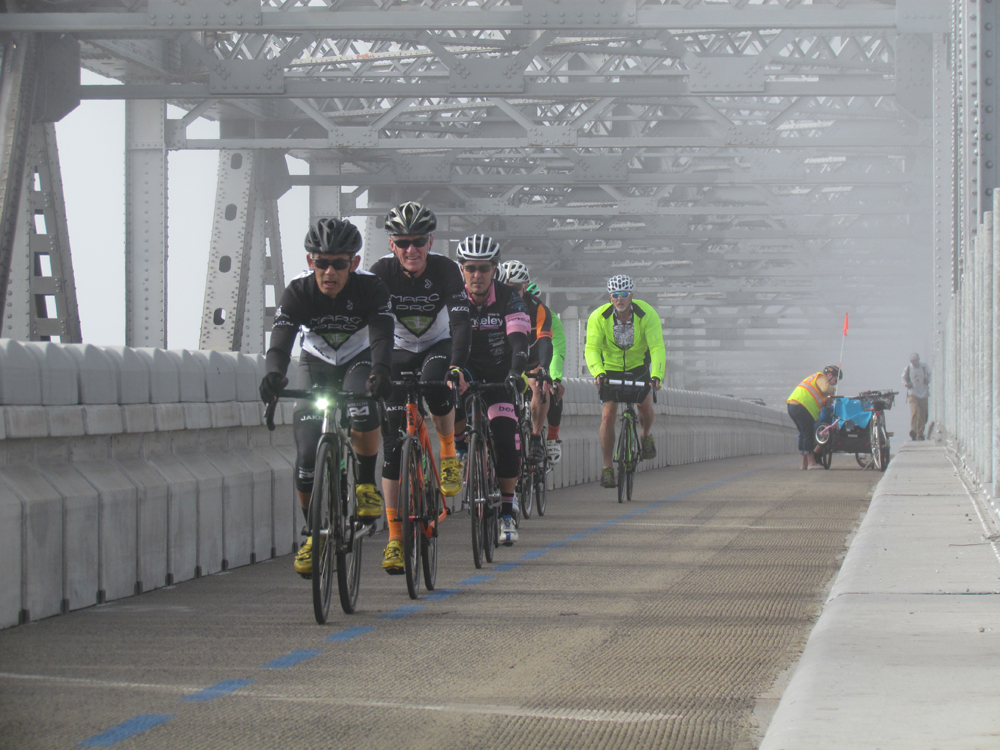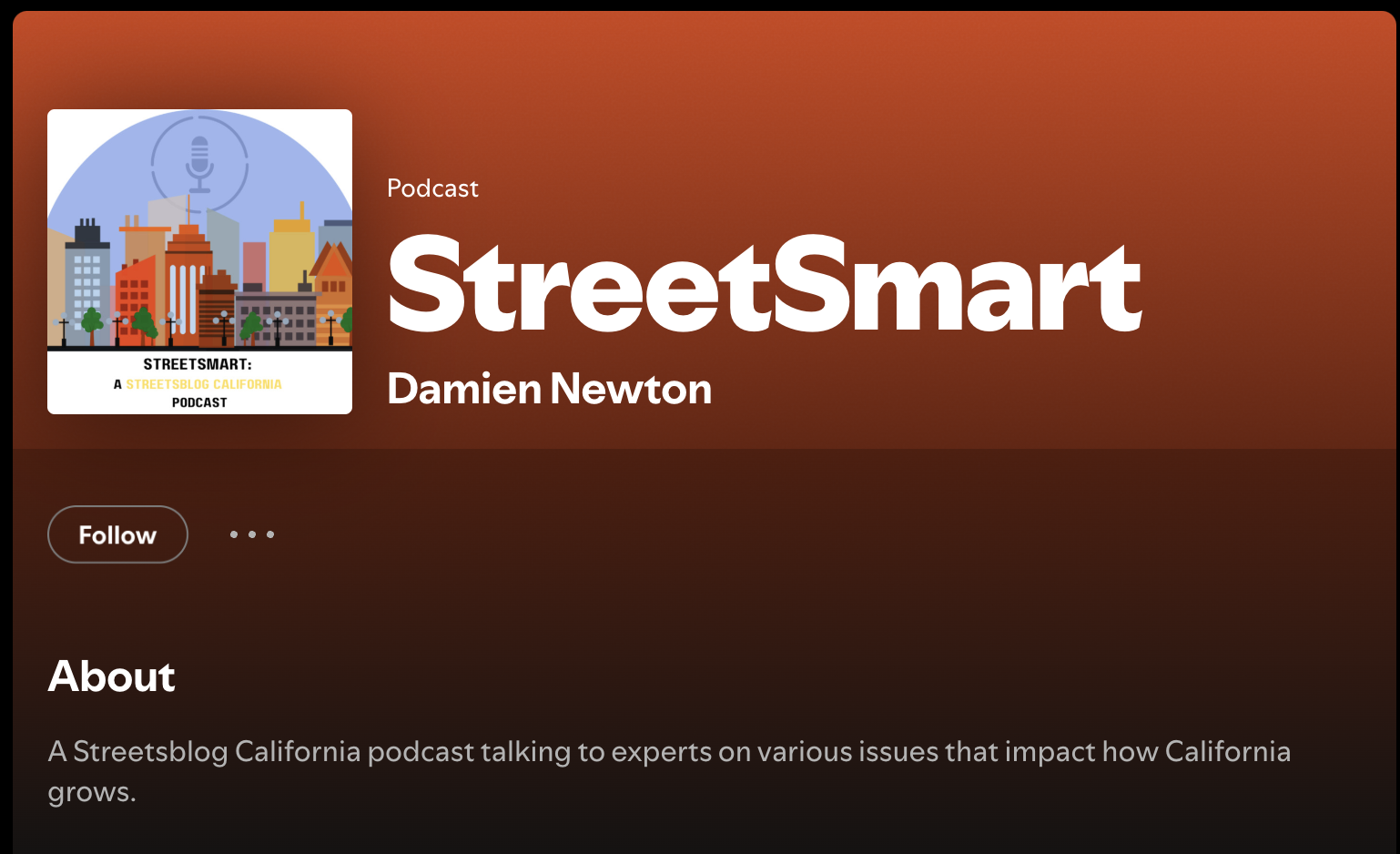It could have been kinda funny, because the headlines from the press conference earlier this week sounded like a bad joke: "Bike lane on Richmond-San Rafael Bridge seen as major cause of pollution" and "Bike lanes on Richmond-San Rafael Bridge seen as contributing to pollution, traffic."
Despite the stalling of his bill, A.B. 1464, to remove the bike lane from the Richmond San Rafael bridge - oh, sorry, to explore the possibility of using the bike lane for cars - Assemblymember Damon Connolly is doubling down on his harmful and nonsensical rhetoric that the bike lane is increasing emissions in Richmond.
Connolly keeps claiming that traffic on the bridge is the source of more pollution than the nearby Chevron refinery. Is he citing actual facts or blowing hot air?
Warren Wells, Policy and Planning Director for the Marin County Bicycle Coalition, was one of the people who asked the Assemblymember's staff for the source of his claims, and his tweet thread about the response was enlightening. Connolly's staff referred him to the Bay Area Council - which is odd, because the Bay Area Council is a business group focused on, well, business and the economy, not air quality research. But the Council supports Connolly's efforts to add a third vehicle lane to the Richmond San Rafael Bridge, so maybe they have the information?
However, the Council apparently didn't have it, and they responded to Wells' queries curtly - rudely - by telling him to look it up himself.
When I emailed his staff for a citation, or to be pointed to a report, I was referred to the @BayAreaCouncil.
— Warren J. Wells, AICP 🚴🏙️🦀 (@WarrenJWells) July 17, 2023
After a couple emails to them, I received the following curt response.
Basically, "google it." Not what you'd think you'd say if you had something firm to point to. pic.twitter.com/xNvif6gD5w
When he checked with the Bay Area Air Quality Management District, the logical source of air quality data, even they couldn't point to any specific findings that backed up Connolly's claim. Yet Connolly's press release was clear:
"According to research by PSE Health Energy (PSE) and air monitoring stations, fine particulate matter (PM2.5), nitrogen dioxide (NO2), ozone (O3), and black carbon (BC) that cause respiratory, cardiovascular, and neurological diseases, especially in children, the elderly, and vulnerable populations spike in Richmond during the morning commute near Interstate 580 [which is the eastern approach to the Richmond San Rafael Bridge]. The I-580 freeway area during the morning commute is the largest and most concentrated source of these harmful emissions," it reads.
It turns out, the report from PSE evaluates results from local monitoring of those three specific pollutants (particulate matter, nitrogen dioxide, and ozone) in the city of Richmond. And it turns out that, indeed, car traffic on the freeways that hem in the city do produce a lot of these kinds of pollution. The summary includes this top finding: "Traffic is an important source of PM2.5, NOx, and BC in the Richmond-San Pablo region." This is especially true during commute hours, near the freeways, and "and during times associated with industrial truck activity."
Important source - of three pollutants associated with vehicle travel (PM 2.5 from vehicle tires especially, NOx and BC from diesel exhaust).
But nothing in the report says that freeway traffic pollutes more than any of the local stationary sources of pollution. So the source of that bit of information is still missing.
Also, the PSE report definitely does not recommend adding a vehicle lane to the bridge as a solution to the problem. Their recommendations include reducing freeway traffic (not inducing it by adding capacity), electrifying heavy-duty trucks, increasing the use of public transit, restricting industrial development that increases local truck traffic, and increasing community access to information about other pollutants that are not as easily measured as these three.
Also likely relevant: there has never been a third vehicle lane on the Richmond San Rafael Bridge (okay, except temporarily when the Oakland Bay Bridge was closed after the 1989 earthquake). What is now a bike lane, separated from cars and truck traffic by a cement barrier, was a breakdown/maintenance lane before it was converted to use by bikes. According to a Caltrans report, "While the addition of the path on the upper deck has slightly decreased peak bridge capacity and increased travel time variability on the Richmond approach, congestion on the approach remains close to historical averages."
Note that "the approach" is where the 580 freeway crosses through the city of Richmond. In other words, not even the current measured pollution from that freeway can be blamed on the bike lane.
Connolly's bill did not move forward, but it could always be revived, especially if the scare headlines he engendered find traction. The Assembly Transportation Committee's analysis of A.B. 1464 ripped it to shreds, noting that its basic premise - opening up a third lane to vehicle traffic would reduce congestion and thereby reduce emissions from that traffic - is demonstrably false. "Studies of induced demand and transportation planning have found that increasing roadway traffic capacity actually increases traffic and does not address congestion over the long term. Therefore, it is unlikely that this bill would provide the benefits the author seeks of improving traffic flow, reducing greenhouse gas emissions, and reducing environmental impacts," it reads.
The analysis also pointed out other technical difficulties with the bill - that it was trying to circumvent legislative rules prohibiting appropriations for specific transportation projects, and that it could jeopardize legal environmental review by specifying certain outcomes - and those may be what kept it from moving forward.
It didn't work this time. But the use of this silly rhetoric - that bikes lanes cause traffic congestion or pollution, or the cute claim that cars in stop-and-go traffic are less polluting than cars in free-flow traffic (and therefore we must add a lane to keep 'em moving!) - must stop.
Don't buy it.
Note: This post has been corrected to note that the barriers between the bike lane and traffic on the bridge are cement, not plastic.






